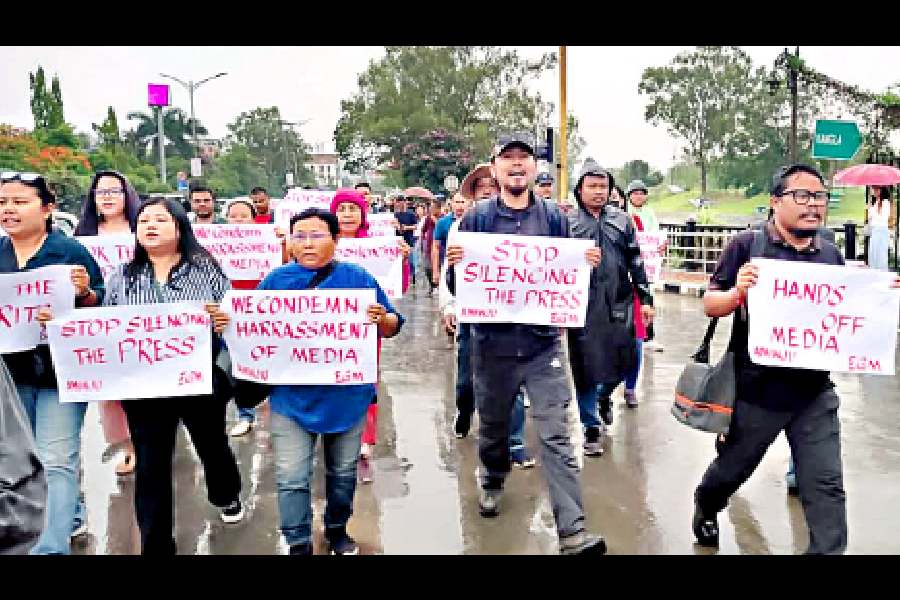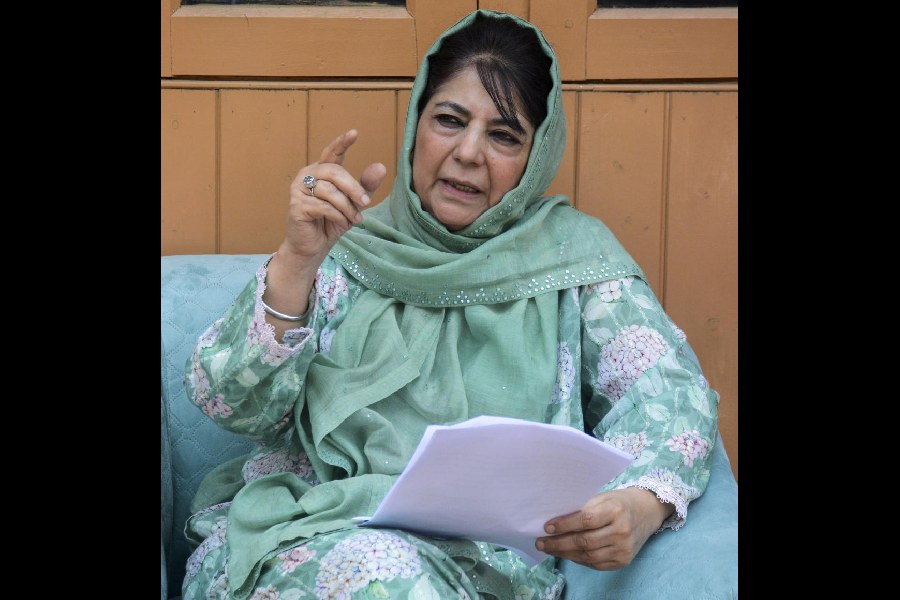|
|
The Chinese currency is under assault — both verbal and speculative. The United States of America’s treasury secretary, John Snow, the US Federal Reserve Bank chairman, Alan Greenspan, and a couple of American senators have called for a revaluation of the yuan/renminbi. The governor of the European Central Bank, Wim Duisenberg, has joined the chorus, as have senior ministers from Japan and South Korea. Influential investment banks have put out research reports suggesting that a revaluation is both needed and is imminent.
Unlike most currencies, the yuan is pegged at 8.28 to the US dollar, although it is allowed to vary within an extremely narrow band of 8.276-8.28. It has always been at the centre of debate. The roots of the east Asian financial crisis of 1997/98 have been traced back by some scholars to the hefty devaluation of the yuan by 50 per cent in mid-1994. During the crisis and its aftermath, however, China earned plaudits for holding the peg and for dispelling fears that it would devalue yet again. But why, when it was praised for currency stability then, is it being criticized for currency stability now? Two major factors account for the view that the yuan is grossly undervalued: (i) the phenomenal rise in foreign exchange reserves and huge inflows of foreign capital; and (ii) persistently high growth rates of both gross domestic product and of exports, especially to the US and to Europe.
China’s forex reserves have increased from $217 billion in January 2002 to $340 billion in July 2003, with over half the increase taking place in the first half of this year alone. Andy Xie of Morgan Stanley and one of the sharpest China-analysts has taken the view that the rapid increase in forex reserves appears to be due to expectation shifts rather than change in fundamentals. China’s forex reserves tend to rise in tandem with capital inflows rather than trade surpluses. He also points out that currency appreciation is not warranted also because China’s actual growth rate is still below the growth potential. What is happening is that foreign direct investment flows are very strong as global manufacturing capacity relocates to China, driven in part by the absence of a currency risk. In addition, overseas Chinese are pouring money into acquiring properties at home. The perception that the yuan is undervalued and can only appreciate in the long run is leading to a significant return flight of capital of both non-residents and residents. Will this prove to be a self-fulfilling prophecy?
China has a huge trade surplus with the US (over $100 billion in 2002 and likely to be $120-130 billion in 2003). This has happened more because China has displaced Japan and other east Asian countries as a low-cost supplier and because it has embedded itself in the global supply chain of American companies. Further, China actually runs a trade deficit with other Asian countries and this includes India (during January-May 2003). The dollar has fallen steeply in global markets (25 per cent against the euro and 10 per cent against the yen in the past eighteen months) because of the very large American current account deficit. This deficit is now at around 5.5 per cent of the gross domestic product and reflects the collapse of savings in the US both among households and corporate organizations leading to a voracious appetite for borrowings from abroad. As the dollar has fallen in relation to the euro, China’s competitiveness in European markets also has increased. As the dollar weakens, China gains.
What will the Chinese do? Fearing a revival of deflation from whose clutches it is just escaping and with a fragile financial sector that is in worse shape than India’s, China may do nothing except widen the trading band or make it a “crawling” band. Movement to a floating exchange rate system is simply not on the cards. While senior officials have recognized the need for flexibility in the exchange rate, it is most unlikely that China would do any substantial upward adjustment in response to international pressure. But there are other options. Foreign exchange controls, both the current and on the capital account, could well be eased much along the lines of what has taken place in India. A disinvestment programme to sell something like $ 240 billion of government holdings in state-owned enterprises is on the anvil. As China’s commitments to the World Trade Organization begin to unfold themselves more fully, import demand will also increase. This is already beginning to happen and China actually ran a small trade deficit in the first quarter of 2003. Regional monetary arrangements could also get a boost as east Asian countries think of alternatives to investing in low-yielding American treasury bonds. However, the more China grows, the more will be the pressure for a revaluation.
India moved from a fixed exchange rate to a “managed float” between 1991 and 1993. The move has been a great success even though there are now pressures evident on the exchange rate front. The rupee has appreciated by almost 5 per cent over the past year as dollars have flown in and forex reserves have zoomed. In the past twelve months alone, India’s forex reserves have increased by $30 billion. The Reserve Bank of India has ascribed this to strong fundamentals — booming software earnings, increasing remittances from Indian workers overseas and strong foreign investment inflows reflecting global confidence in India. While all this is undeniable, the fact that Indian inflation-adjusted interest rates are 3-5 percentage points higher than in countries like the US, has led to a surge in capital inflows. These inflows are best described as “arbitrage capital” as it may not be quite “hot” money as popularly understood and feared. Both NRIs (and their RI counterparts) and foreign institutional investors have brought in large sums to take advantage of attractive interest rates in India.
Such large inflows could have stoked inflation but the RBI has rightly prevented that from happening by “sterilizing” the bulk of the inflows by the sale of government securities. Interest rates could have been dropped to moderate the inflows of arbitrage money. Indeed, this has been the response in some east Asian countries where forex reserves have also shot up like in India. But because of the need to maintain high interest rates for provident fund and small savings, there are limits to how much interest rates will be allowed to fall. With inflation not increasing and interest rates not falling, something has to give and that something is the exchange rate. In the absence of a buoyant demand for dollars because of sluggish economic growth rates, the rupee has kept appreciating and if it continues to do so export growth could well be the casualty. In the short-run, a strengthening rupee may fuel pride but the exchange rate must be seen just as another price. There should be no stigma associated with a weakening currency. But currency management has to be part of a comprehensive strategy, embracing non-price factors as well, to boost global competitiveness. More than the exchange rate itself, China’s stunning success in world markets is explained by these non-price factors (for example, infrastructure, labour laws, small-scale reservation) and by a superior domestic taxation system in which a single value added tax occupies a central place. In all these areas, we continue to be at a severe disadvantage.












